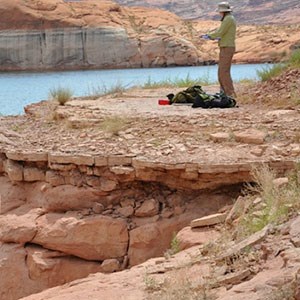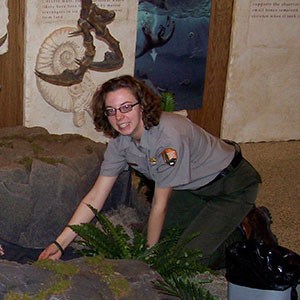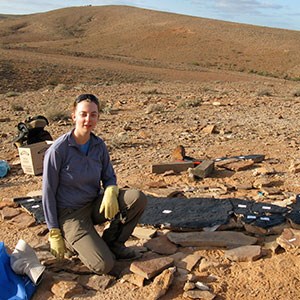Part of a series of articles titled Meet A Paleontologist.
Article
Erica Clites, University of California Museum of Paleontology

Collections Manager, University of California Museum of Paleontology
What is your job, and what do you study?
I make fossils available for other people to study by organizing them and putting information and photographs of them online.
What are you working on now?
I am currently curating a collection of 100,000 snails, clams and other mollusks. These fossils were collected by paleontologists and geologists of the US Geological Survey's Menlo Park office from rocks in California, Oregon and Washington. Some of the fossils were collected as early as the 1860s, but most of them were collected from the mid 1950s through the mid 1990s as geologists were mapping the rocks of Pacific Northwest.

Where did you go to school? What were some of your favorite classes that you took?
At the College of Wooster one of my favorite classes was Sedimentology and Stratigraphy. It is very important to understand the context you find fossils in. I enjoyed learning about the differences between ripples formed by rivers, waves or the wind and figuring out what direction a stream flowed based on layering within the sandstone.
Was there an experience you had that made you realize you wanted to be a paleontologist?
When I was in high school, I attended a Girl Scout Wider Opportunity program called Nebraska Rocks!. We spent two weeks traveling across the state and helping graduate students with their thesis projects. This included things like using screens to sift for fossils, using radar to look for fossils underground, learning how to cast bones and studying a "highway" of dense dinosaur tracks. I also love spending time outside, traveling to new places to do fieldwork and making the connections between a stream bank you see eroding today with what it looks like in the rocks!

What is your most memorable experience working with fossils?
Working on my Master's thesis in South Australia, I made a latex reproduction of an entire bed of fossils on one sunny day. Most latex molds are small, but the ones we made were like small carpets. I spent the whole day going back and forth painting additional layers of latex rubber dyed black onto the rocks. Back in Riverside, I spent many hours studying these latex reproductions in a darkened lab.
Do you have any advice for aspiring paleontologists?
Spend as much time in the field as you can! You will learn to apply the concepts you studied in class, and each new place you visit will help you recognize and interpret similar rocks in the future!
Last updated: July 27, 2018
